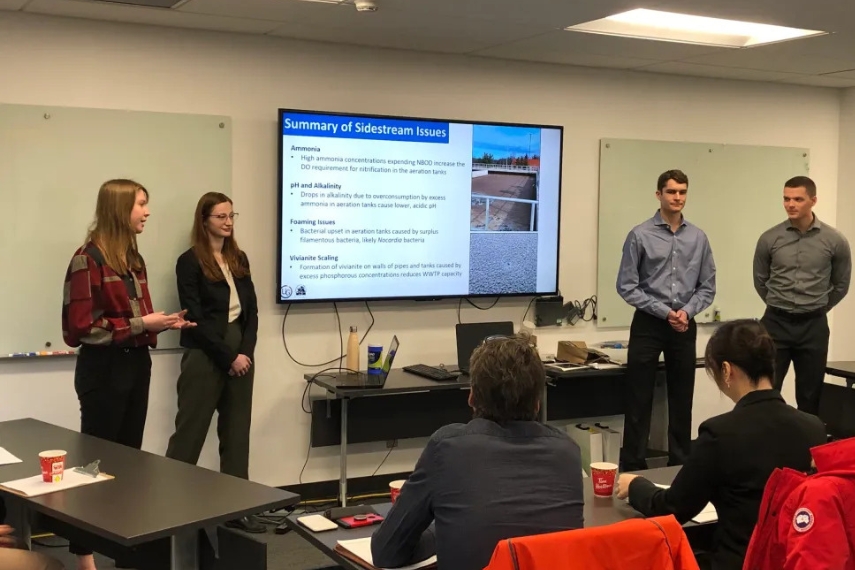Fourth year students win WEAO Design Competition

The School of Engineering is proud to announce that four 41X students recently competed and won the Water Environment Association of Ontario (WEAO) Student Design Competition for 2023. The design challenge focused on upgrades to the Mid Halton Wastewater Treatment Plant (WWTP) in anticipation of significant growth. Kelly Ward, Victoria Lucas, Jeffrey Stevens, and Daniel O'Connell will go on to represent Ontario at the Water Environment Federation Student Design Competition in Chicago in October this year.
Dr. Bassim Abbassi supervised the student team and was impressed, “they were curious, motivated, and dedicated to learning. During their work on the design project, they were actively engaged, asked thoughtful questions…they were able to collaborate and effectively communicated their ideas clearly and persuasively.” The School of Engineering’s focus on design and experiential learning seems to be paying off. Victoria Lucas has already benefited from the co-op stream and in fact heard about the WEAO competition while working in the Engineering Services at the Region of Peel.
When asked what the biggest moment of the competition was for Victoria, she answered, “being able to present our preliminary designs to a panel of five industry advisors where we were able to receive feedback. It was a great experience to answer questions about our design and discuss ways to improve our design based on actual industry experience.” It’s these kinds of interdisciplinary design opportunities that drew Victoria to the Engineering program in the first place. The program “presented a magnitude of opportunities for me to expand my knowledge of environmental systems and design innovative solutions to current issues,” she shared.
The Phase 1 solutions of the team’s design will start in the next couple of years. This will include retrofitting an existing centrate storage tank at the plant into an equalization tank that uniformly returns the sidestream flows to the head of the plant. The equalization tank will reduce the negative effects of inconsistent sidestream flows and consequently reduce the spikes in nutrient concentrations in the aeration tanks. Moreover, optimization of the aeration tank by reducing the rate of returned activated sludge (RAS) will be implemented. This will increase the food-to-microorganism (F/M) ratio and, accordingly, reduce the growth rate of filamentous bacteria that have a negative impact on the efficiency of the secondary settling tank. Phase II won’t start until 3-5 years from now and will include additional innovations.
Abbassi is confident that suggested improvements in the wastewater treatment system design can “significantly reduce operational costs by reducing the amount of energy, chemicals, and other resources required to treat wastewater, resulting in reduced environmental footprints.”
Let’s hope for another win for Victoria, Kelly, Jeffrey, and Daniel in October!